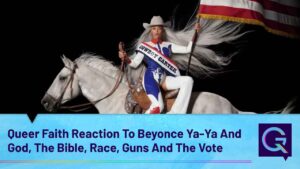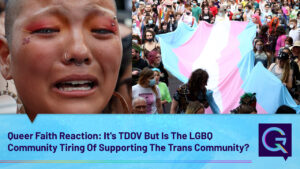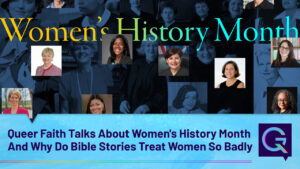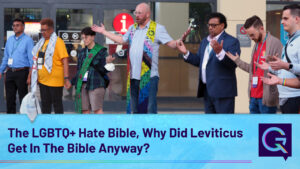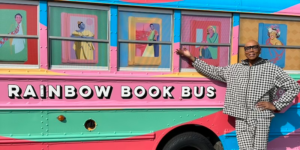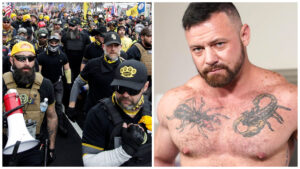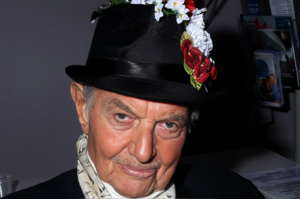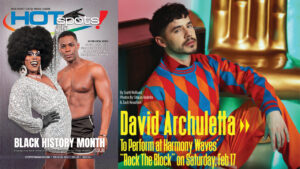Movies like Carol, Happiest Season, I Care a Lot, Blue is The Warmest Color, and Half of It, including A Netflix series Ratched and Feel Good have gained tremendous praise and acknowledgment from across the world.
The world has become more accepting of the LGBTQ+ community and the mainstream media is not shy of producing content for the community audience. However, that was not the case around a century ago when the first ever lesbian movie was produced and released.
The first-ever lesbian movie is believed to be “Mädchen in Uniform” (“Girls in Uniform”), a German film released in 1931. The film tells the story of a teenage girl who is sent to an all-girls boarding school and develops a crush on her female teacher. The film was groundbreaking at the time, as it was one of the first to depict a lesbian relationship on screen, albeit in a somewhat coded and subtle way.
“Mädchen in Uniform” was directed by Leontine Sagan and co-written by Sagan and Carl Froelich, and it starred Hertha Thiele and Dorothea Wieck. The film was controversial in its time and was initially banned by the Nazi party, which came to power in Germany shortly after its release. However, it was later screened in other countries and gained a following among LGBTQ+ audiences. Since “Mädchen in Uniform,” there have been many films that have depicted lesbian relationships, some of which have been groundbreaking in their own right. However, this film remains an important milestone in the history of queer cinema. The movie also had an all-female cast.
The first ever lesbian movie in the USA was made 30 years after “Mädchen in Uniform” and it is believed to be “The Children’s Hour,” which was released in 1961. Directed by William Wyler, the film stars Audrey Hepburn and Shirley MacLaine as two female schoolteachers who are accused of being lesbians by a student at their school. The film was based on a play of the same name by Lillian Hellman and was considered controversial at the time due to its depiction of homosexuality.
“The Children’s Hour” was significant in its portrayal of lesbian characters as sympathetic and complex individuals, rather than as stereotypes or villains. The film was also groundbreaking in its depiction of the consequences of homophobia, as the characters’ reputations and livelihoods are destroyed by false accusations against them.
Even before the first-ever full-fledged lesbian movie was produced in Germany, there have been films with lesbian references and hints. These movies were not necessarily inspiring or accepting towards women or the LGBTQ+ community, but they at least mentioned or showed glimpses of the queer community. These movies go as back as 1912.
Let us take a look at them.

Algie, The Miner (1912)
This ten-minute comedy directed by Alice Guy-Blaché centers on an effeminate city boy named Algie Allmore. He wishes to marry a rich man’s daughter and is given one year to prove his worth as a man. So he travels to the Wild West, where he learns how to shoot a pistol, ride a horse, and mine for gold.
At first, Algie is mocked by the cowboys. Once he’s adapted to Wild West culture, he carries a six-shooter and interacts with other cowboys in a traditionally masculine manner.
Algie develops a bond with his bunkmate, Big Jim—a bond that modern critics have interpreted as a romantic attachment. He becomes a wealthy miner and later returns home, taking Big Jim with him, to stake his claim to the girl he wants to marry.

I Don’t Want to Be a Man (1918)
In this German comedy film, a spirited teenage girl named Ossi Oswalda defies the gendered expectations and takes part in activities that are prohibited for a lady, such as smoking, playing poker, and speaking to strange men on the street
One day Ossi sneaks out of the town disguised as a man to attend a lavish ball. She finds that being a man comes with its share of challenges.
At the ball, she meets Dr. Kersten. They share cigars, get drunk, and end up exchanging kisses, implying bisexual or at least bi-curious leanings. They pass out in a taxi cab and are both dropped off at Dr. Kersten’s house. Ossi sneaks out and runs home the next morning. Dr. Kersten goes to her house, finds her removing her disguise, and realizes who she is.
The two laugh about their drunken adventure and happily kiss.

Different from the Others (1919)
The film centers on a successful violinist named Paul Körner who falls in love with one of his male music students. Another man sees them together and blackmails Körner, threatening to expose him if he doesn’t pay a hefty sum. This was during the era of Paragraph 175, a statute that criminalized homosexuality in Germany.
Eventually, Körner is outed, his career is ruined, and his family and friends abandon him. Körner commits suicide, and his young lover vows to dedicate his life to fighting Paragraph 175. This movie was a financial success, despite protests and riots at many public screenings. The film was banned the following year. Over a decade later, the Nazi Party came into power and destroyed every copy they could find.
Luckily, 40 minutes of footage was saved by sexologist Dr. Magnus Hirschfeld, who both co-wrote and appeared in the film. In 2011, it was bought by the UCLA Film & Television Archive, which worked to restore those 40 minutes for modern audiences.

Salomé (1923)
Salomé is the first film adaptation of Oscar Wilde’s play of the same name. It portrays a retelling of the Biblical story of Princess Salomé, who seduces her stepfather, King Herod of Judea, and convinces him to execute Saint John the Baptist.
The ladies of the court were all played by men in drag. Outside the palace, two effeminate male characters stand guard, touching and leaning on each other in ways that imply a romantic relationship.
This film was the passion project of Russian-American actress Alla Nazimova, who financed, produced, co-directed, and starred in the film. Nazimova, who was open about her relationships with women, has been credited with coining the phrase “sewing circle” as a code referring to closeted lesbian and bisexual actresses. Her romantic partners included director Dorothy Arzner and Oscar Wilde’s niece, Dolly Wilde.
Some claimed that Nazimova insisted on casting only gay and bisexual actors in Salomé.

Queen Christina (1933)
This is another important movie, which is a biopic on the life of Queen Christina of Sweden who was known for her rejection of gender norms, with her masculine clothing and mannerisms, her refusal to marry, and her enthusiasm for sports and hunting. She had several female lovers, including an Italian singer, a French noblewoman, and a lady-in-waiting Ebba Sparre.
The movie has taken liberty by showing a fictitious romance with Spanish envoy Antonio Pimentel del Prado. In real life, Christina never had relationships with men.
Christina’s interactions with Ebba Sparre indicate a romantic relationship. They greet each other with a kiss on the lips, and Ebba begs her to go on a sleigh ride with her. Christina refuses due to her royal duties but promises to take Ebba on a trip to the country.
Despite its inaccuracies, Queen Christina arguably still has LGBTQ+ merit, as Christina is portrayed as bisexual and gender-nonconforming.
If you are aware of such movies, reply to us. Meanwhile, we hope this blog has entertained and tingled your curiosity to know more about the LGBtq+ literature, culture, and past.
Author
-

Her motto is to Live and Let Live. She believes in an inclusive and accepting approach toward life and hopes that one day we, as humans, will learn to respect and accept each other. She trusts in open dialogue and creating a safe environment for children. She is a proud LGBTQ+ community member who is living happily with her partner for 6 years with Dexter, their pet.




